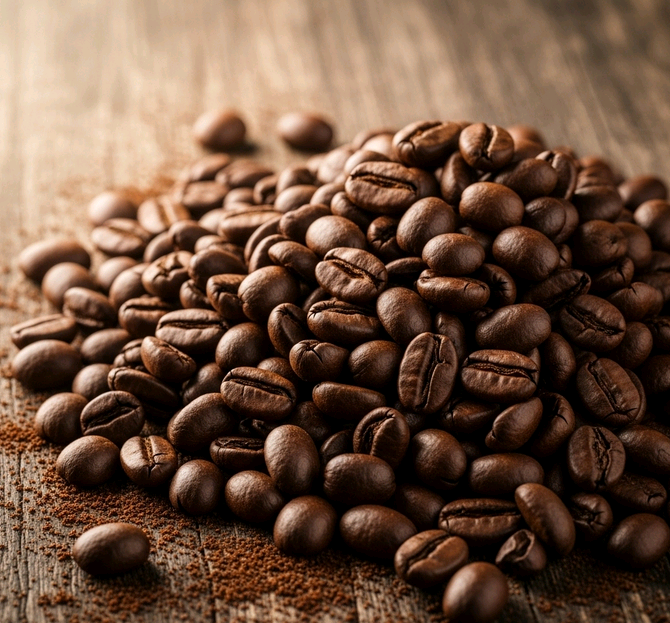The real reason Kona coffee is so expensive
Are you a coffee connoisseur, or just someone who appreciates a good cup of joe? If so, you’ve probably heard of Kona coffee. Known for its sweet, smooth flavour with hints of spice and nuts, Kona coffee is a real treat for the senses. But it also comes with a hefty price tag. So what exactly makes Kona coffee so expensive? Let’s explore the factors that contribute to its high cost.
Unique origins and limited supply
Grown on the west coast of the Big Island of Hawaii, Kona coffee is one of the only coffees produced in the United States. The region’s ideal climate, volcanic soil and unique terrain create the perfect environment for growing these exquisite beans. However, the growing area is limited to a small 30-mile strip of land and accounts for just 1% of the world’s coffee supply.
The scarcity of Kona coffee, coupled with its high demand, drives up its price. Coffee enthusiasts from around the world seek out this unique brew, adding to its exclusivity and cost.
Environmental challenges
While the Hawaiian Islands provide an ideal environment for Kona coffee, they also present environmental challenges. Coffee crops in the region are currently facing invasive plant diseases and an infestation of beetles known as the coffee cherry borer. These problems have devastated coffee plantations, reducing the already limited supply of Kona coffee.
Coffee leaf rust, a plant disease, has also affected many coffee farms, forcing farmers and agricultural officials to take measures to protect their crops. These environmental challenges further contribute to the scarcity and increased prices of Kona coffee.
Labour-intensive harvesting methods
Unlike many coffee-producing countries that rely on mechanical harvesting, Kona coffee beans are hand-picked due to the rocky terrain of the volcanic slopes where they grow. This labour-intensive process significantly increases the cost of production.
Coffee farmers in Hawaii are paid a minimum wage to ensure they are fairly compensated for their hard work. However, the higher labour costs, combined with the meticulous hand picking required, add to the overall cost of growing Kona coffee.
But there is a silver lining to this manual harvesting method. By carefully selecting only perfectly ripe, big red beans from the same tree multiple times, coffee farmers ensure a higher quality flavour profile for Kona coffee. This meticulous approach results in an unforgettable cup of coffee that justifies its premium price.
Is Kona coffee worth the price?
Given the unique origins, limited supply, environmental challenges and labour-intensive harvesting methods associated with Kona coffee, it’s no wonder it commands a premium price. However, for coffee lovers who appreciate the rich and nuanced flavours of this exceptional brew, the cost is often justified.
Kona coffee offers a taste experience unmatched by many other coffees. Its vibrant yet balanced acidity, fruity undertones and nutty caramel notes make it a favourite among coffee lovers. Every sip is a treat that transports you to the sunny slopes of Hawaii where these precious beans are grown.
So the next time you enjoy a cup of Kona Coffee, savour its unique flavour and appreciate the dedication and hard work that goes into its production. It may be more expensive than other coffees, but the exceptional taste and the knowledge that you’re supporting local farmers make it a worthwhile investment.
In summary, the high price of Kona coffee is due to its unique origin, limited supply, environmental challenges and labour-intensive harvesting methods. These factors contribute to its exclusivity and the exceptional quality that sets it apart from other coffees. For those who truly appreciate a superior coffee experience, Kona coffee is a luxury worth indulging in.
FAQS
Kona coffee is more expensive due to its unique origin, limited supply, environmental challenges and labour-intensive harvesting methods. These factors contribute to its exclusivity and exceptional quality.
Where is Kona Coffee grown?
Kona Coffee is grown on the west coast of the Big Island of Hawaii and is one of the only coffees grown in the United States.
What are the environmental challenges facing Kona Coffee?
Kona coffee faces invasive plant diseases, an infestation of beetles called the coffee cherry borer, and coffee leaf rust. These challenges have reduced the supply of Kona coffee and increased its price.
Why is Kona coffee hand-picked rather than machine-picked?
Kona coffee beans are hand-picked due to the rocky terrain of the volcanic slopes where they grow. This manual harvesting method ensures higher quality beans and flavour profiles.
Is Kona coffee worth the price?
While Kona coffee is more expensive, many coffee lovers find its unique flavour and exceptional taste to be worth the price. Its vibrant acidity, fruity undertones and nutty caramel notes make it a favourite among coffee lovers.
How does the limited supply of Kona coffee contribute to its high cost?
Kona coffee is produced in small quantities, accounting for only 1% of the world’s coffee supply. The limited supply, coupled with high demand, drives up the price of Kona coffee.

